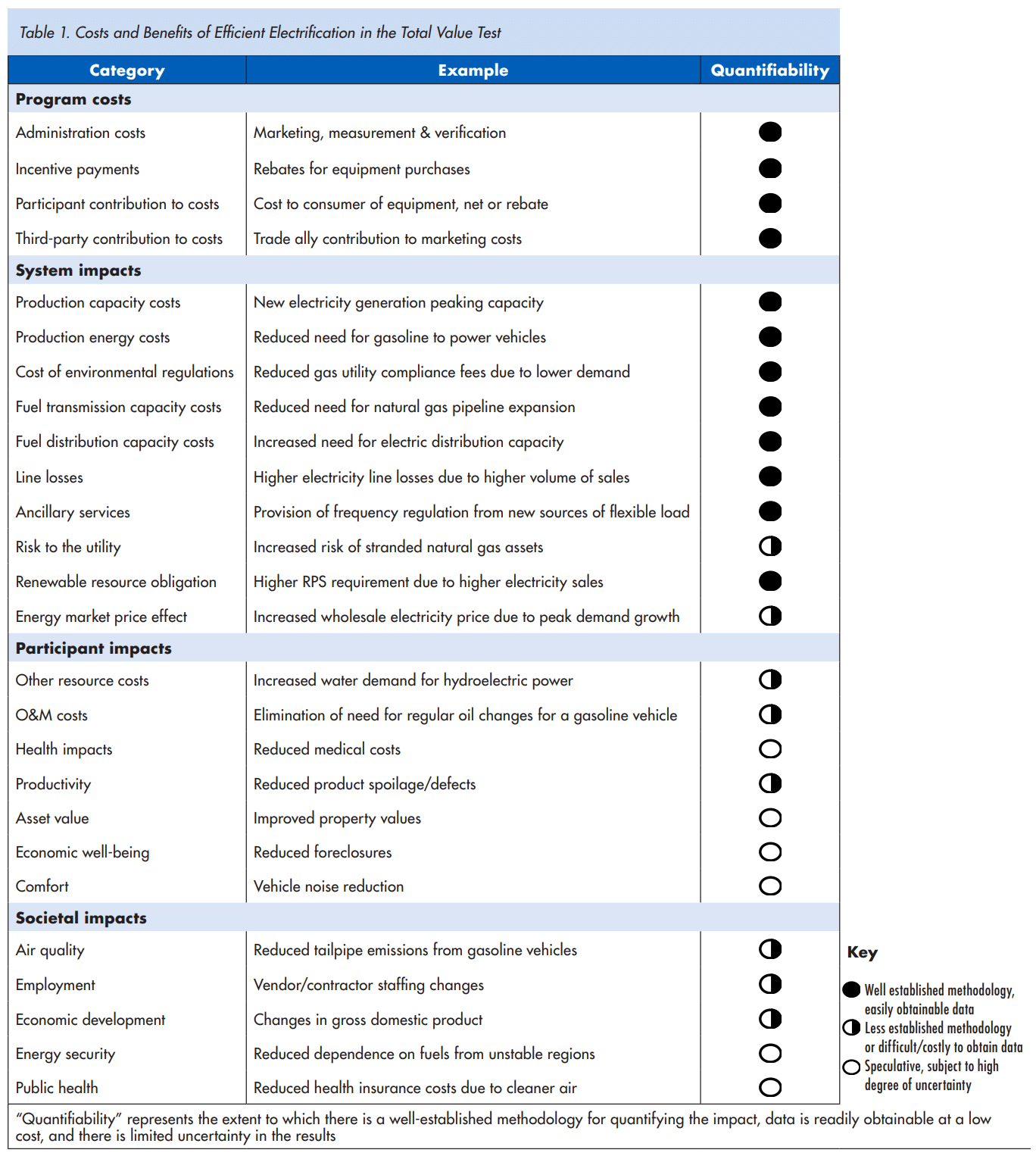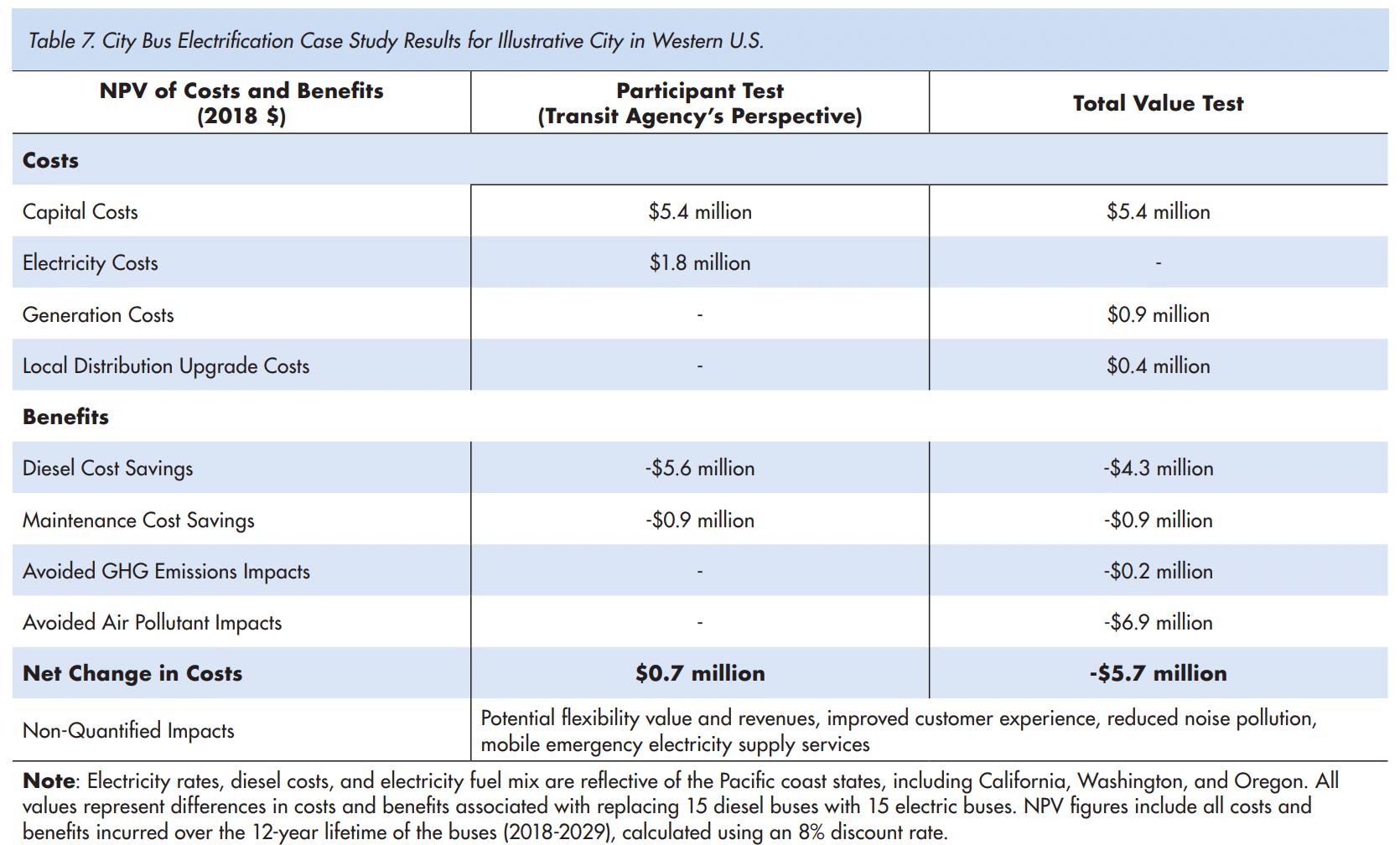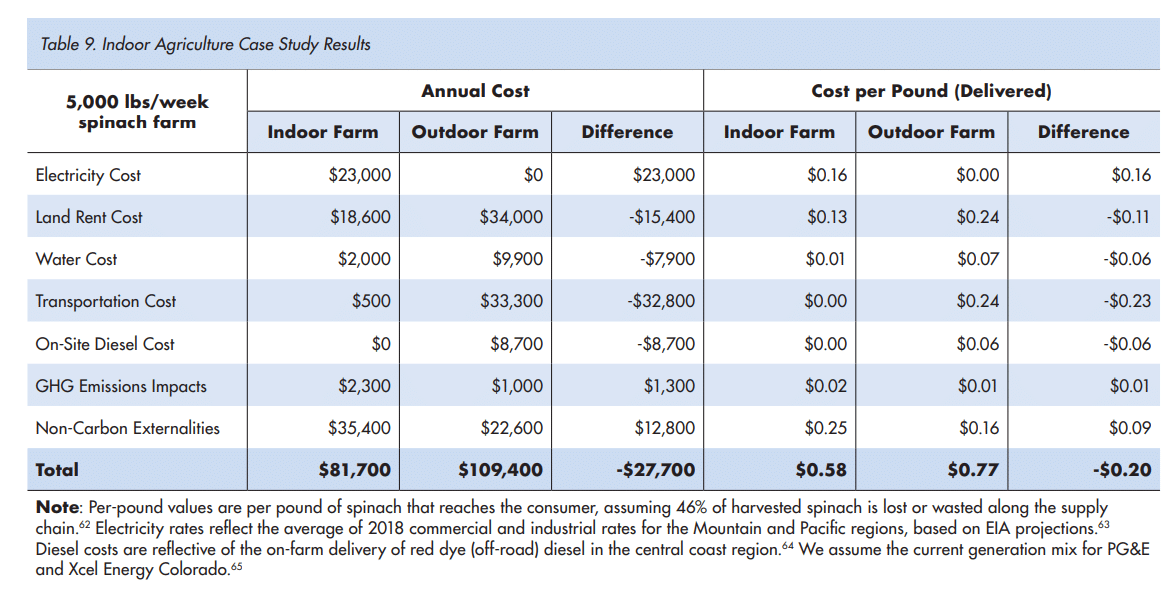An analysis by the Electric Power Research Institute (EPRI) found electrification could increase U.S. electric load between 24% and 52% between now and 2050, with emissions decreasing 19% to 67%. A separate analysis by The Brattle Group suggested this electrification could triple the growth rates of electricity sales, and decrease emissions by 80% if coupled with decarbonization of the energy supply. And now we see exactly why our electricity utilities – coast to coast – are suddenly pushing for solar powered buses and high speed car charging networks.
The Brattle Group has published The Total Value Test: A Framework for Evaluating the Cost Effectiveness of Efficiency Electrification for the Electric Power Research Institute (EPRI) with an express purpose of providing a tool – the Total Value Test (TVT) – to place an explicit economic value on shifting end user energy use from fuel burning toward electricity use.
The report identifies 26 unique categories of potential costs and benefits (below image). In addition to creating an explicit list of benefits – energy and non-energy – for regulators to consider, the report also recognizes the reality of our ability to accurately mathematically describe these costs and benefits.

The document academically reviews the current industry standard – the California Standard Practice Manual (SPM). As Brattle sought to offer a more comprehensive review of electrification in this report, the group chose academic-level reviews that provided critiques of SPM methodologies, proposed new frameworks for estimating cost effectiveness, or focused on holes in the SPM model.
At a high level, the review of the SPM model found it to be, broadly speaking, relevant and useful. But it also found that non-energy benefits need more quantification research, pilots shouldn’t need to demonstrate cost effectiveness, customer cost impacts need better understanding, flexibility and power modeling is becoming more important, and – in the long term – cost-effectiveness is important.
In showing how their model works Brattle produced three case studies. The first (below image), of city bus electrification showed how prior models – the Participation Test in the left column – would value this electrification as a $0.7 million cost to ratepayers, while the TVT calculates a savings of $5.7 million to ratepayers. A swing of $6.4 million that represents a missed opportunity.

The document also notes at the bottom of the above image further non-quantified impacts – noise pollution, energy security, less wear and tear on riders and roads, disaster relief, etc.
The most challenging to calculate, and largest, of the values – avoided air pollutant impacts – was calculated with the following variables:
CO2 damages (were valued) according to the U.S. Government Interagency Working Group’s estimates at a 5% discount rate of $11 to $18 per metric ton of CO2 escalating between the years 2015 and 2035. We estimate the cost of CAP emissions based on values sourced from existing literature. Those values are $4.72 per gallon of diesel fuel, $0.19 per kWh from coal-fired generation, and $0.057 per kWh from natural gas-fired generation.
A case study of indoor agriculture found that non-energy benefits are more prominent than energy benefits due to the complexity of the food production and delivery systems, though per the below image – transportation costs were a significant driver of the 20¢/pound savings of delivered spinach.

As we’ve recently seen, for the first time in the United States, a city – Berkeley, California – has banned gas infrastructure in all new construction. A second city is already considering it and more will follow. Electric utilities are pushing for electric cars, city centers are banning internal combustion engines, and states like California and Colorado are pushing for 100% electrical vehicles. Much like renewable electricity has grown, and energy storage is growing, there will be significant change in everything else.
This content is protected by copyright and may not be reused. If you want to cooperate with us and would like to reuse some of our content, please contact: editors@pv-magazine.com.









By submitting this form you agree to pv magazine using your data for the purposes of publishing your comment.
Your personal data will only be disclosed or otherwise transmitted to third parties for the purposes of spam filtering or if this is necessary for technical maintenance of the website. Any other transfer to third parties will not take place unless this is justified on the basis of applicable data protection regulations or if pv magazine is legally obliged to do so.
You may revoke this consent at any time with effect for the future, in which case your personal data will be deleted immediately. Otherwise, your data will be deleted if pv magazine has processed your request or the purpose of data storage is fulfilled.
Further information on data privacy can be found in our Data Protection Policy.